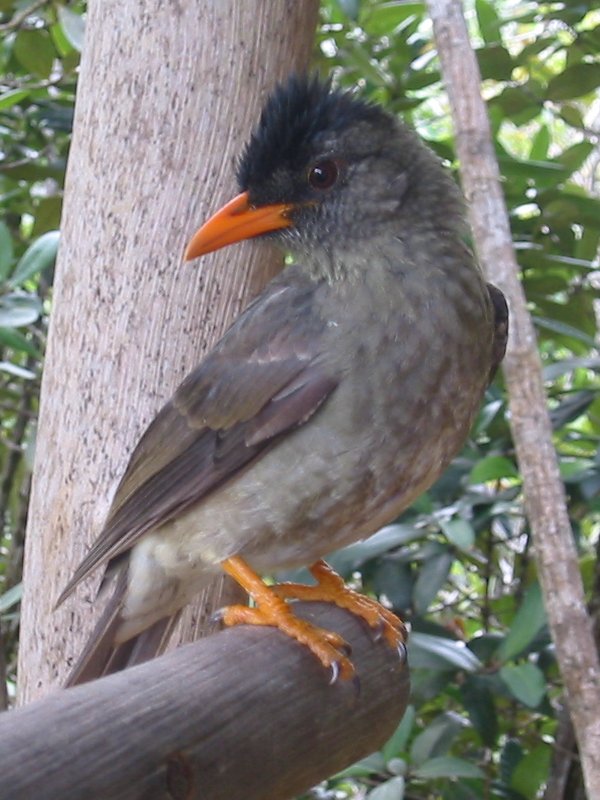|
| Query: tanuki | Result: 6th of 16 | |
Seychelles Bulbul (Hypsipetes crassirostris) - Wiki
| Subject: | Seychelles Bulbul (Hypsipetes crassirostris) - Wiki
| |

| Resolution: 600x800
File Size: 106313 Bytes
Date: 2005:01:17 12:41:39
Camera: Canon IXY DIGITAL 200a (Canon)
F number: f/4.0
Exposure: 1/20 sec
Focal Length: 346/32
Upload Date: 2007:10:26 16:41:37
|
Seychelles Bulbul
From Wikipedia, the free encyclopedia
[Photo] Seychelles Bulbul (Hypsipetes crassirostris). Taken in Jan 2005 at Vall??e de Mai on Praslin Island, Seychelles. By Tanuki77 (http://en.wikipedia.org/wiki/User:Tanuki77) | Permission is granted to copy, distribute and/or modify this document under the terms of the GNU Free Documentation License, Version 1.2 or any later version published by the Free Software Foundation; with no Invariant Sections, no Front-Cover Texts, and no Back-Cover Texts. A copy of the license is included in the section entitled "GNU Free Documentation License". |
The Seychelles Bulbul, Hypsipetes crassirostris, is a member of the bulbul family of passerine birds. The species is related to the Comoros Bulbul. It is a common endemic species of the Seychelles, breeding on Mah??, Praslin, La Digue and Silhouette as well as some smaller islands. The Seychelles Bulbul is social, living in pairs, family groups or small flocks in forest and woodland from the sea to the mountains on granitic mountains. The species is omnivorous, taking fruit, flowers, eggs, and insects gleaned from foliage or hawked during short flights. They are very aggressive towards other birds species, chasing away birds as large as Green-backed Herons from areas that they are feeding in.
The breeding season of the Seychelles Bulbul usually begins at the start of the monsoon, around October to January, although breeding can occur at any time. It builds a circular nest out of palm fibres, leaves, twigs and moss in a forked tree branch, usually 10 m or more above the ground. Two whitish eggs with spots are usually laid per season, although in most cases only one chick is successfully raised to fledging age. Incubation lasts for 15 days and fledging occurs 21 days after hatching, but young fledglings will accompany adults after fledging, possibly to learn foraging skills.
http://en.wikipedia.org/wiki/Seychelles_Bulbul
| The text in this page is based on the copyrighted Wikipedia article shown in above URL. It is used under the GNU Free Documentation License. You may redistribute it, verbatim or modified, providing that you comply with the terms of the GFDL. |
|
^o^
Animal Pictures Archive for smart phones
^o^
|
|

